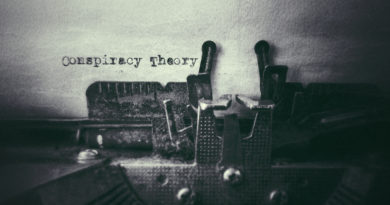Paul Staley: Supply Chains for Easter Bunnies

What do supply chains and conspiracy theories have in common? Paul Staley explains.
The supply chain was one of those things that most of us didn’t think about much before the pandemic. One could argue—a bit facetiously— that this indifference can be traced back to our childhoods. Think about the stories we were told about how presents got to our house. Their arrival was not the end of a long sequence of handoffs and processes but the benevolent act of a single actor like Santa Claus or the Easter Bunny. A bit of that childhood innocence still remains when we marvel that all we have to do is tap our phones and—shazaam!—a package arrives at our front door the next day.
But the fact that we took for granted the vast and intricate web that delivers all our stuff, either to our homes or the shelves of the stores where we shop, doesn’t mean that some of our fellow citizens aren’t interested in detecting other networks of connections. After all a conspiracy theory is just another form of supply chain: people in different locations handle a sequence of steps that result in some desired outcome. For example, destroying valid ballots and replacing them with illegal ones requires the diligence and coordination of multiple actors. The more byzantine and elaborate theories imagine connections that span the globe just like the supply chains that produce semiconductors or automobiles.
Obviously conspiracy theories have been with us for a lot longer than our modern world of logistics. But, still, the existence of the intricate choreography that delivers sweaters and cooking utensils to our front door provides a template for imagining more nefarious enterprises. Just because you can’t see all the steps involved doesn’t mean they didn’t happen. You simply begin with the outcome—the delivery of a book to your house or an unwelcome electoral result—and trace the sequence back to its origin.
But in the end the difference is this: the supply chain is how things happen, a conspiracy theory is an attempt to explain what happened, and sadly, about as true the stories we were told about Santa Claus and the Easter Bunny.


